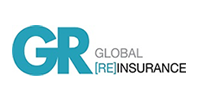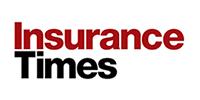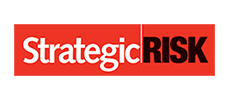The motor market has peaked too soon, says Paul Moorshead
At first sight the UK motor insurance market has had a satisfactory year, but initial impressions can hide what is really going on. Our analysis shows that the market has peaked too soon, just after starting to make money again. Premiums are not rising fast enough to keep pace with the demands being made upon them, and they may actually be in decline. At least, however, we are unlikely to see a return to the price wars that wrecked balance sheets during the late 1990s.
The FSA returns for 2003 show that motor insurers marginally improved their combined ratios from 102.6% to 102.2%. Average loss ratios (net of reinsurance and allowing for prior year reserving adjustments) fell from 75.8% in 2002 to 74.9%. Net premium income rose 2.8% to just over £8.5bn.
Operating profit
Although most motor insurers failed to achieve underwriting balance, they were able to report an operating profit. Reliable investment income information is not publicly available, but a fair assumption would be a 5% return; this would turn a 2.2% underwriting loss into a 2.8% profit.
A motor insurer may typically be required to hold capital equivalent to 40% of their premium income. This would translate the 2.8% profit into a 7% return on capital employed. Add investment income on the capital itself and we estimate that motor insurers are currently enjoying a capital return of around 12%.
Look closer, however, and you can see that things are not as they seem or as insurers would like them to be. The recent marginal improvement in underwriting is based upon a strong performance by the commercial vehicles account, which benefited from a benign winter last year. It is clear that the core private car account has already peaked, with comprehensive and non-comprehensive loss ratios rising 1.8% and 1.7% respectively.
According to a recent AA survey, comprehensive car insurance premiums have fallen by 2% over a three-month period. If this becomes a trend, it is one that the insurance industry simply cannot afford.
Price rises
To maintain the current level of profitability, prices need to go up.
This is partly because of the long-term trend in bodily injury claims, which have historically risen by more than twice the retail price index.
In addition, there are two big issues on the horizon for motor insurers, namely periodical payments and further pressure on the Ogden discount rate, which governs personal injury claims. This all adds up to a period of uncertainty for which some insurers are unprepared.
Periodical payments will be the statutory default for judges making pecuniary loss awards from November 2004. These periodical payments will be reviewable in the future, index-linked and guaranteed for life.
Clearly, such an award is good for the claimant and the state, but there are a number of impacts that have not been fully considered by all insurers.
They are not insurmountable, but our experience suggests that these factors are likely to increase the level of claims and have not yet been taken fully into account.
As usual, the average hides a wide range of individual insurers' results.
The table above provides a 'league table' of insurers in terms of profitability.
It is important to bear in mind when reading the chart that some results were distorted by one-off factors.
Once these are taken into account, some of the insurers that appear to have under-performed did considerably better than their position in the table suggests. Even with this reservation, it is telling to note that there is no automatic link between profitability and distribution channel.
Insurers that obtain business directly do not have a monopoly on profit, nor are broker-based insurers lagging behind.
What is clear is that to remain big in motor insurance, companies need a strategy of targeting all sectors of the market. It is not enough to write on a mono-line or mono-distributional basis.
Nor is size a reliable guide to profitability. It can be seen that some of the smaller motor insurers are able to operate at a profit in 'niche' market segments. Such insurers include Sabre, Legal & General, Westminster Motor and Ecclesiastical, who all turned in operating ratios under 100% this year.
The largest five motor insurers, grouped by parent company, account for £5.5bn of earned premium in 2003, 65% of the market total. While this proportion has increased this year (up from 58% in 2002), the proportion is likely to reduce over the next few years. This is because, as profitability improves, capital is attracted into the market, providing competition for the existing players. This leads inevitably to downward pressure on rates.
The good news for the industry is that it appears to have become much better at handling the insurance cycle. The shape of the loss ratio trend (see graph on left) is different from what we have seen in the past. Helped by more sophisticated underwriting tools available to insurers, the underwriting cycle is likely to be less pronounced in future.
Performance decline
Looking ahead, we are estimating that the 2004 accident year will see a modest decline in the performance of motor insurers, booking a 77.5% net of reinsurance loss ratio, which will be reduced to 76.5% net of prior year reserving adjustments. Breaking this overall figure down by line, we anticipate the gross of reinsurance loss ratio for the different types of motor insurance (see table below).
While we do not appear to be heading for a price war, we are moving towards a market where only those insurers that achieve above-average performances are able to make satisfactory profits. Any further deterioration in 2005 and beyond would be totally unacceptable to the industry's long-suffering shareholders.









































